Arthouse at the Jones Center
Austin, TX, 2010
Renovations of century-old buildings of architectural merit often attempt to reconstitute particular moments of history. For this contemporary art space, however, LTL embraced the trajectory of the existing construction’s transformation, rather than returning it to a moment frozen in time. Located in the heart of downtown Austin, Arthouse is a renovation of a 1920s theater that was later modified as a department store in the 1950s. During the midcentury conversion, the building’s open structure, consisting of a concrete frame with steel trusses, was altered to include a single-story, steel-supported concrete deck. This second-floor addition cut in half the theater’s large proscenium space. Adding 14,000 square feet of new program to the existing art space, LTL intensified this peculiar accumulation of history by conceiving of the design as a series of further tactical additions and adjustments. These supplements revive and augment extant features—such as the trusses, concrete frame, and ornamental interior frescos from the 1920s, as well as the awning, storefront, and upper-level display window from the 1950s.
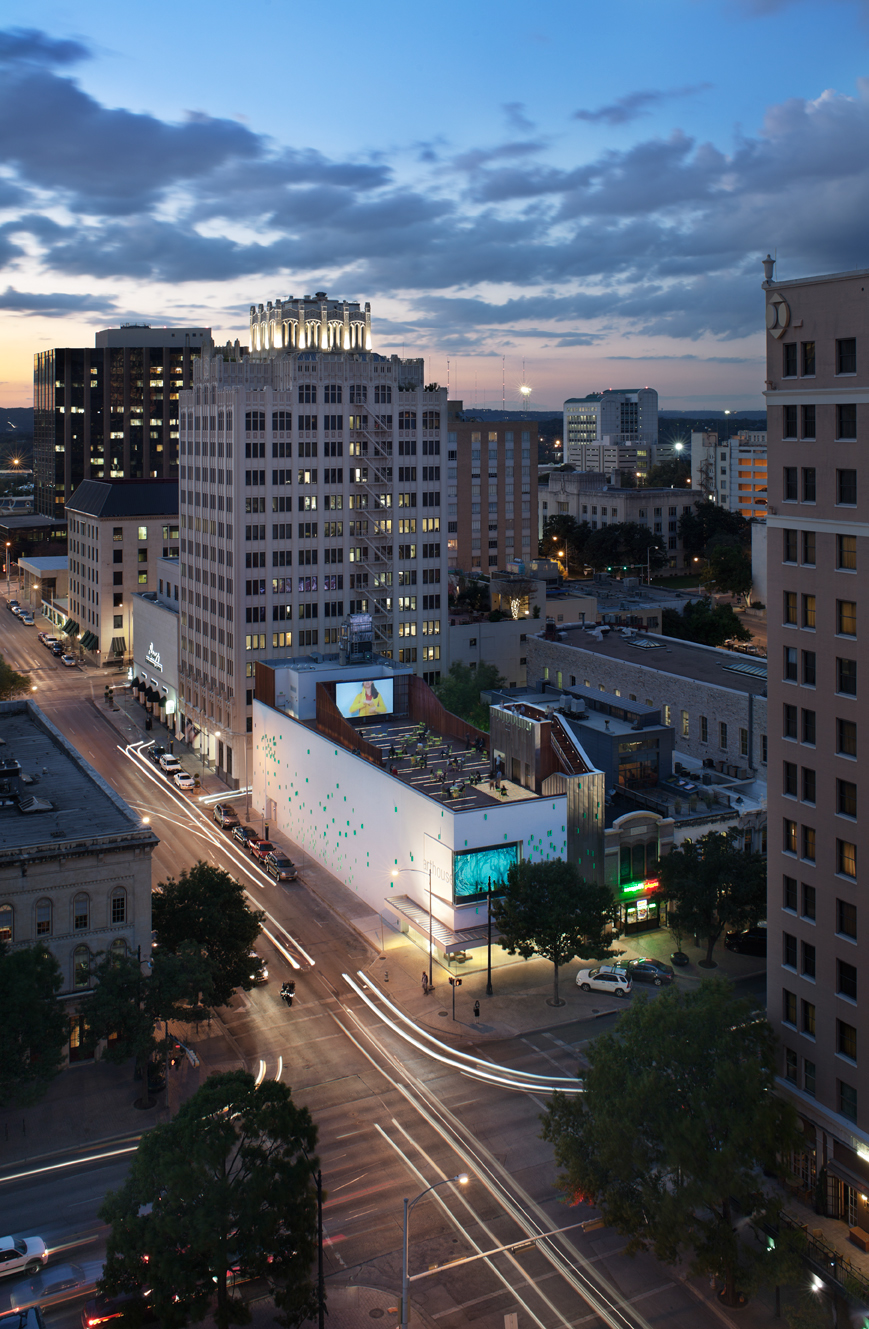
Exterior at night
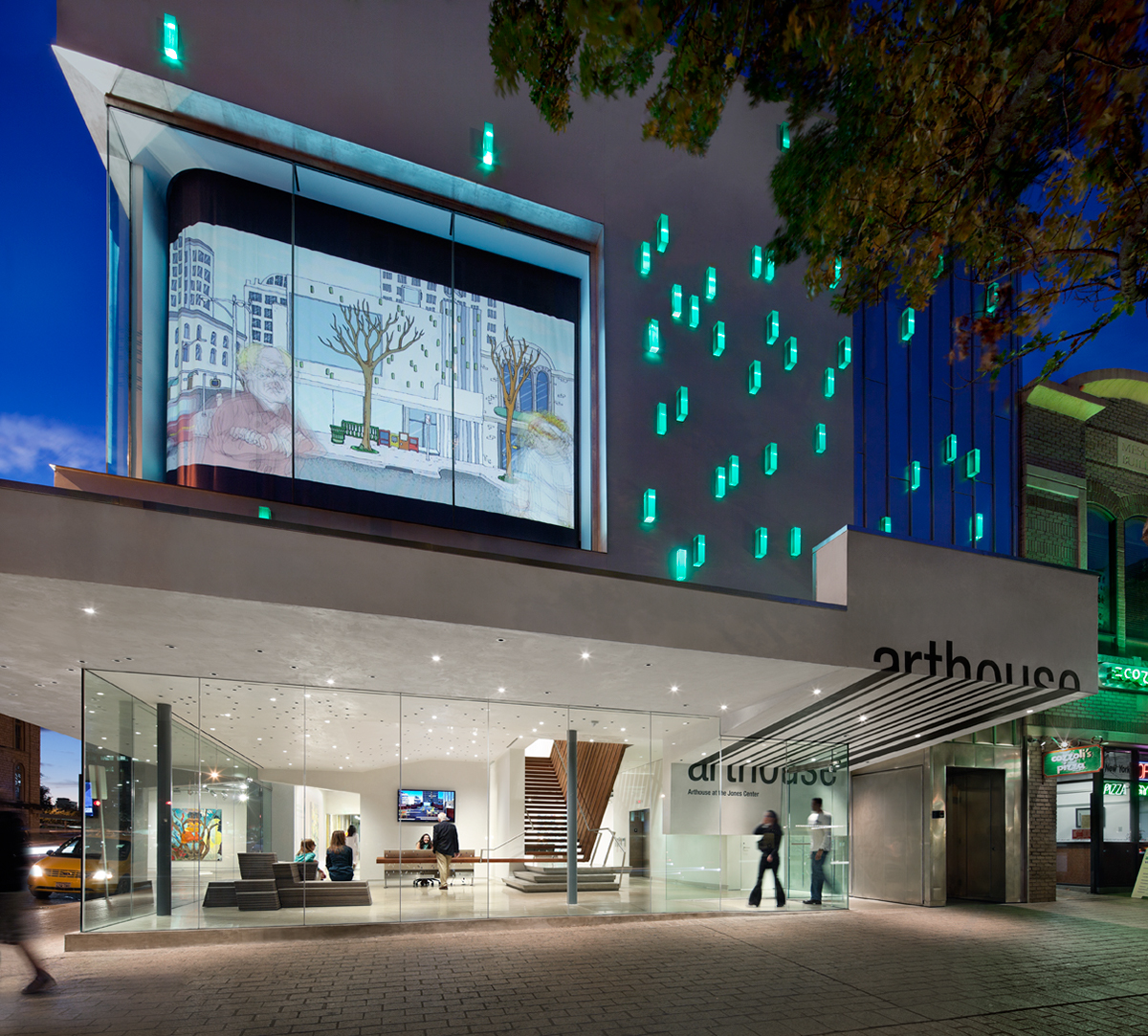
Street view
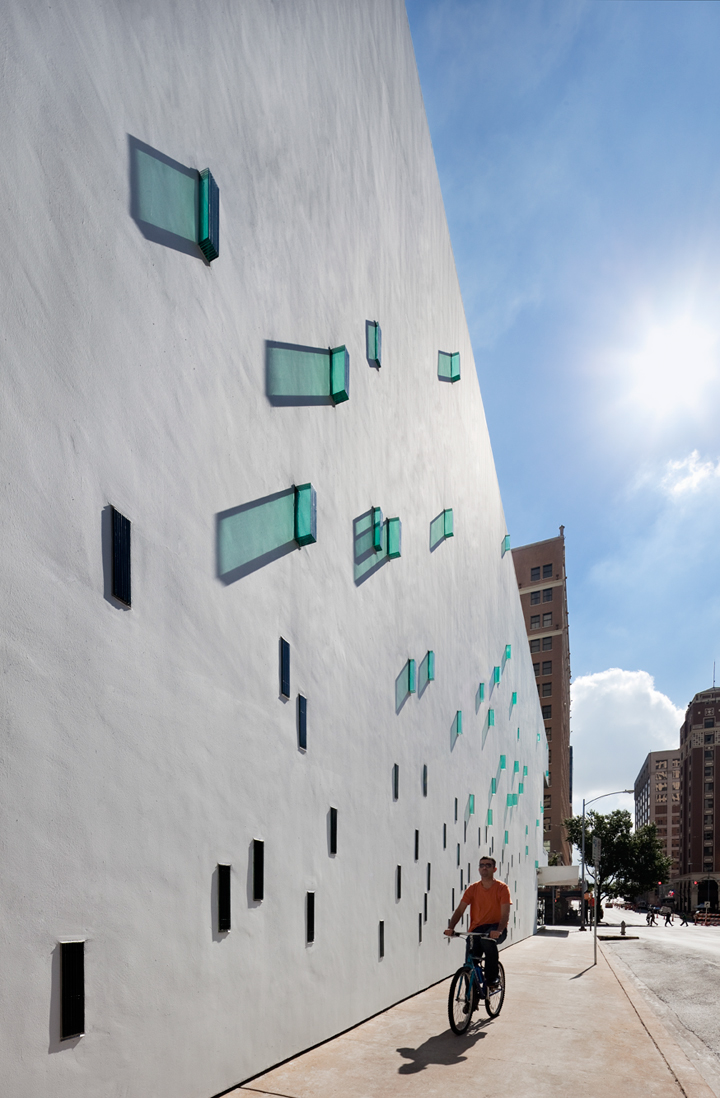
Glass blocks on the southern elevation.
The majority of the existing building’s elevations lacked windows, as a theater and a department store do not require natural light. Similarly, gallery spaces demand few windows. Therefore, a new form of aperture, based on accumulation and density, was developed to unify the building and create a logical yet unconventional facade appropriate for an experimental art venue. The southern and eastern elevations are perforated by 177 glass blocks, which are lodged in the existing masonry. The quantity of perforations is increased where more light is needed—offices, studios, meeting rooms—and decreased where light is less desired, as in the galleries and lecture room. Set within the infill of the concrete frame, the density and locations of the blocks telegraph the structure and program of the building through its skin. During the day, luminous shadows cast by the cantilevered blocks animate the exterior stucco surface, while at night individually programmable LED lights illuminate the blocks from within the wall thickness. Inside, the blocks augment the existing theater frescos and remaining traces of the department store, adding a new bespoke layer to the accumulated surface.
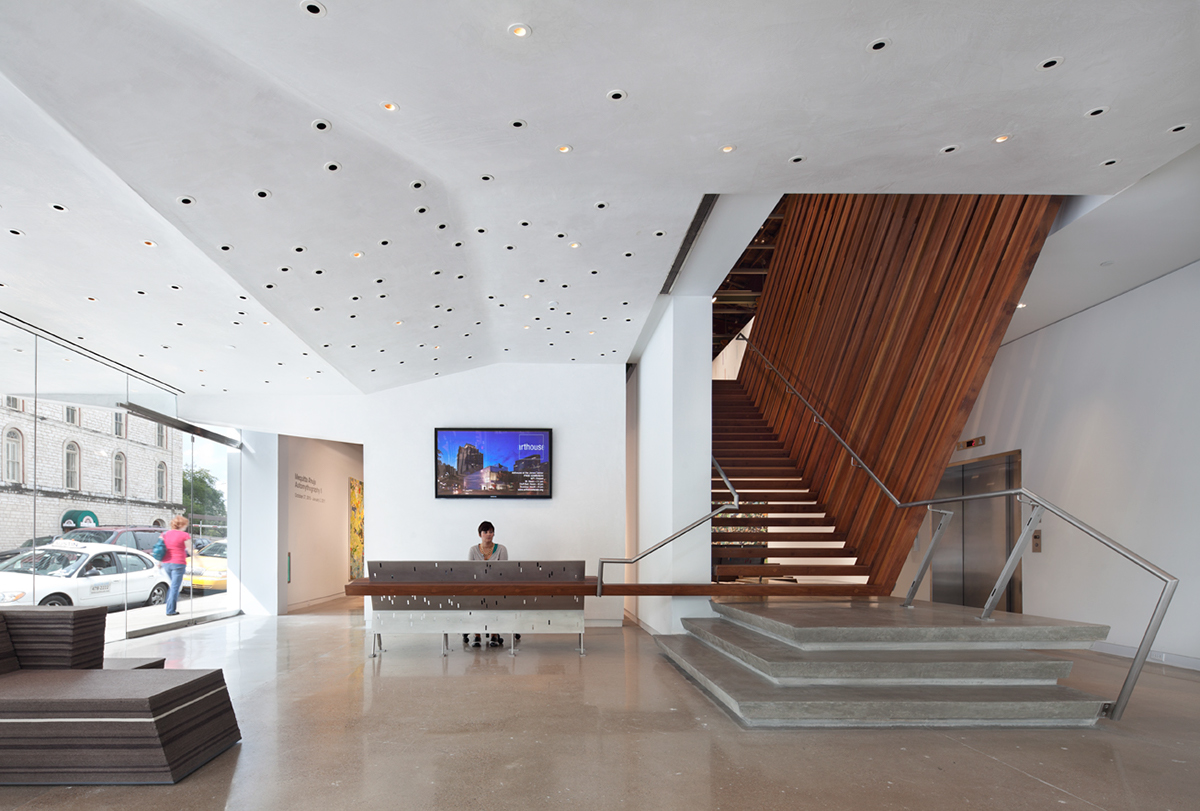
Entry lobby
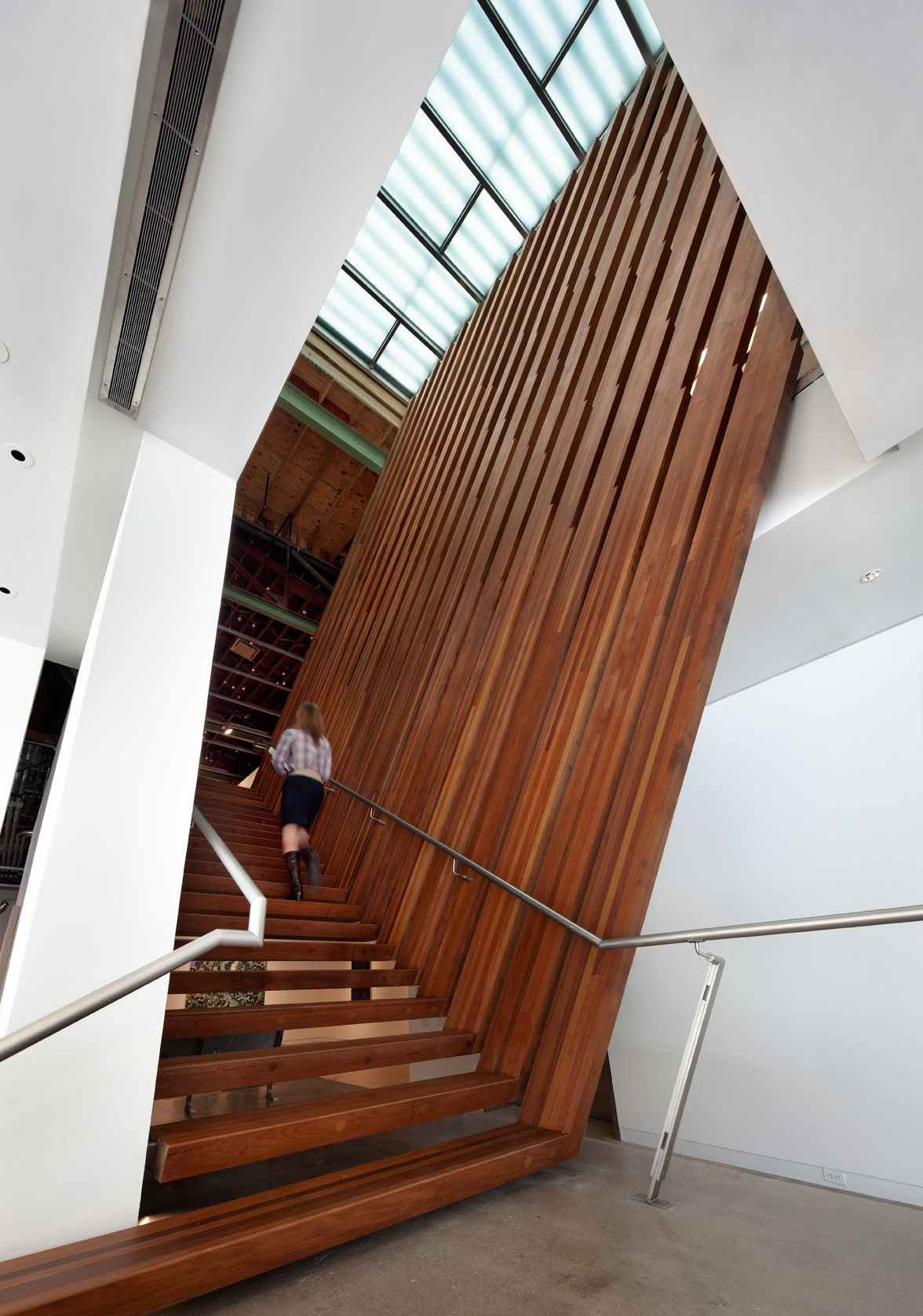
Central stair
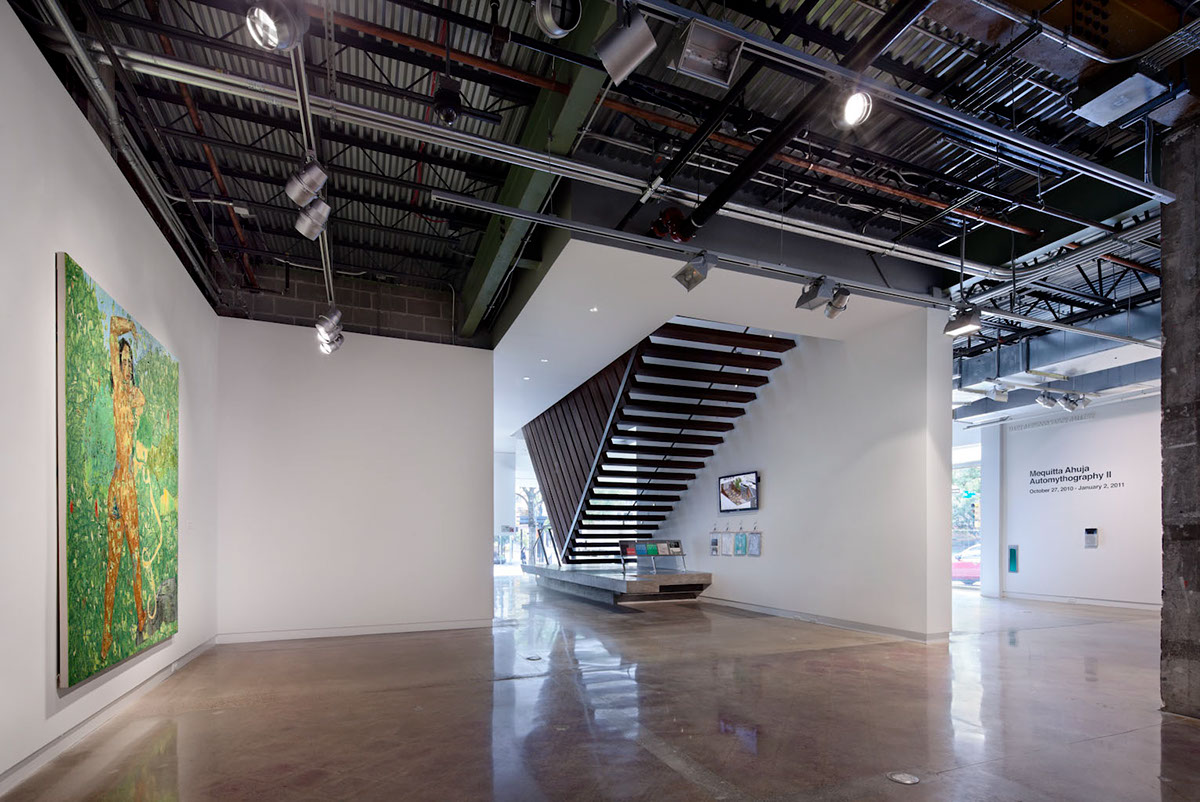
First-floor gallery
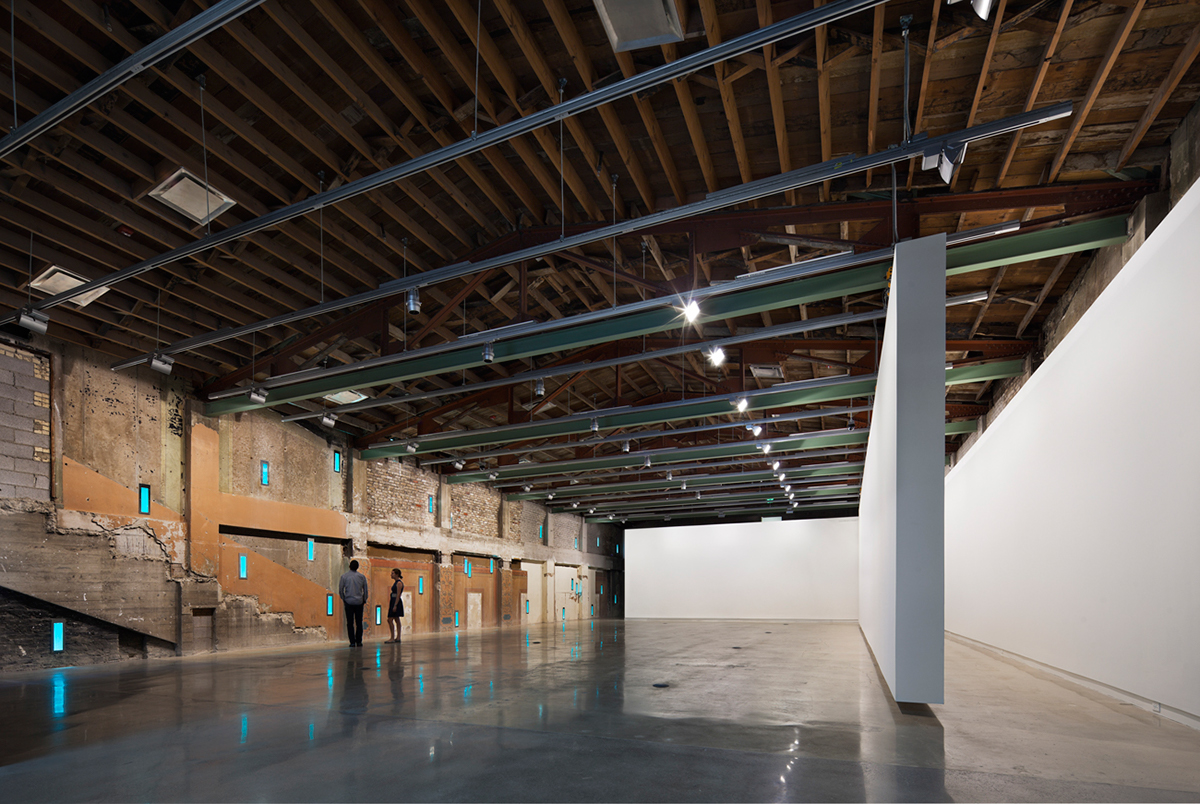
Main gallery with movable wall
In the main gallery, a thirteen-foot-high by fifty-five-foot-long wall is suspended from beams that were required to stiffen the bottom chords of the existing steel trusses. Using motorized trollies, the gallery can be quickly reconfigured from a single space that reveals the textured southern wall to a more conventional white wall gallery. Alternatively, the wall can be used to split the gallery into two, or to form a constricted tunnel-like space adjacent to one of the exterior walls.
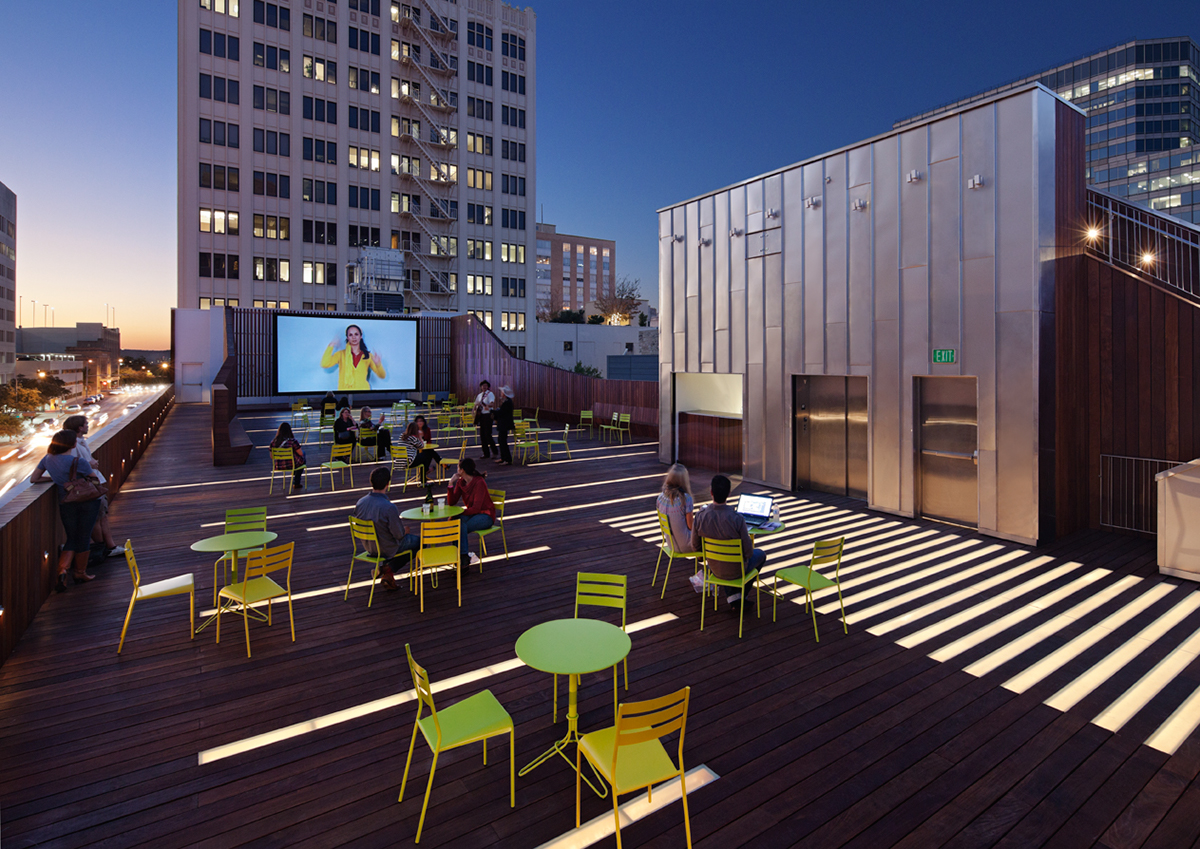
Roof deck
Project Credits
Client: Arthouse at the Jones CenterProject team: Paul Lewis, Marc Tsurumaki, David J. Lewis; Jason Dannenbring, project manager; Michael Tyre, project manager; Matthew Roman, Laura Cheung, Monica Suberville, Hilary Zaic, Mia Lorenzetti, Tamicka Marcy, Eli Allen, Chris Cornecelli, Nicolas Rivard, Kristen Chin, Elena Koroleva, Aude Masboungi
Structural engineer: MJ Structures
Mechanical engineer: Kent Consulting Engineers
Civil engineer: Garrett-Ihnen Civil Engineers
Lighting designer: LumenArch
LED lighting designer: Alejandro Bulaevsky
A/V consultant: Dickensheets Design Associates; Blue House Design, Media Integration
Contractor: Structura
Photographer: Michael Moran
Photographer: Michael Moran

